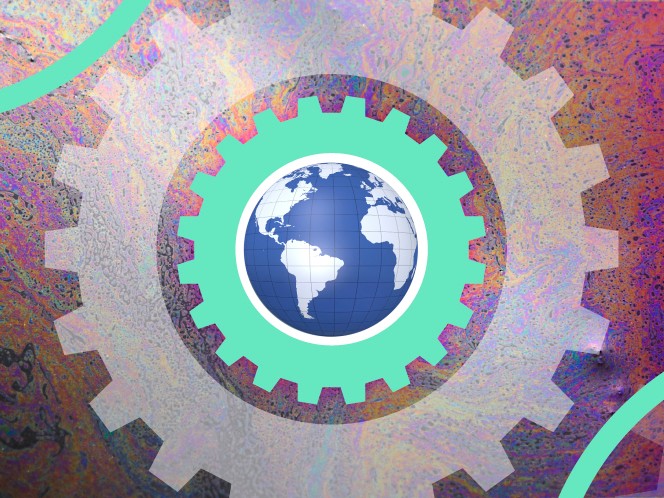Energy—not technology—defines modern life
Posted: December 09, 2024

Review: How the World Really Works: A Scientist’s Guide to our Past, Present and Future by Vaclav Smil
What is humanity’s single most transformative technological breakthrough?
According to scientist Vaclav Smil, it’s not the lightbulb, the steam engine, and definitely not artificial intelligence. These innovations merely bolster our comfort, convenience, or productivity. Smil, rather, is most concerned with matters of existential necessity. In his 2022 bestseller How the World Really Works, he boldly claims that to-date, humanity’s greatest technical achievement is most likely the Haber-Bosch synthesis of ammonia.
If you didn’t place this breakthrough at the top of your list—or for those who don’t know what the Haber-Bosch process is—Smil’s book was written with you in mind. It’s a guide for anyone who lacks a working understanding of the material processes essential to modern civilizations. And the Haber-Bosch process is undeniably one of them: this innovation, which enables the industrial production of fertilizer, is directly responsible for feeding about half of the world’s population today.
Our Industrial Life
Get your bi-weekly newsletter sharing fresh perspectives on complicated issues, new technology, and open questions shaping our industrial world.
Smil finds it troubling that most people in modern societies—laypeople and scientists alike—depend so heavily on certain processes and energy sources, but only have a superficial understanding of how the world “really” works. Because without widespread understanding of how our lives depend so heavily on processes currently powered by fossil fuels, democratic societies won’t be able to make rational decisions that will ensure our survival and prosperity.
To tackle this comprehension deficit, Smil draws our attention to four materials he calls the pillars of modern civilization: cement, steel, plastics, and ammonia. Ammonia enables the food production needed to feed the still-growing population; cement and steel have the material properties required for modern tools and infrastructure; plastics have all kinds of critical applications, most indispensably in healthcare. Smil vividly communicates how unthinkable our societies would be without these four pillars.
Yet these materials come at a steep environmental cost: their production is heavily reliant on fossil fuels—and despite some meaningful progress in developing cleaner means of production, the absolute amount of emissions from these materials continues to increase. Steelmaking, for instance, emits an average of 500 kilograms of carbon per ton and accounts for 7–9% of global fossil fuel emissions.
Modern civilization, as Smil emphasizes, is inextricably tied to fossil fuels through its dependence on these four materials. And reducing this dependency to meet net-zero targets will take, by his estimates, at least decades. The policymakers and techno-optimists who pronounce that their plans or solutions will take just a few years to decarbonize our societies are subjects of Smil’s repeated withering critiques—these overconfident people just don’t understand how the world “really” works.
Of course, it’s not only these four materials that rely so deeply on oil and gas. Smil vividly illustrates just how thoroughly fossil fuels permeate every aspect of society with a cascade of compelling—and unsettling—data points that comprise the bulk of the book. Take food production, for instance. The crucial process of ammonia synthesis is energy-intensive and fossil-fuel dependent, as is field farming, animal husbandry, and fishing. In the United States, these processes require roughly 1% of the nation’s energy supply. But if you take into account the fuel and electricity needs for the food system as a whole, like processing, packaging, transportation, and storage, it’s even higher. Smil estimates that food production now consumes as much as 20% of the United States’ energy supply—up from 16% in 2007.
Smil asks readers to consider the humble tomato, native to Mexico, but widely eaten throughout the world. Imagine slicing a medium-sized tomato in half and pouring five to six tablespoons of oil over it. That’s about representative for how much diesel fuel is embedded in that one tomato’s production and transportation. Pretty much every bite that citizens of a modern society take is effectively drenched in oil, as are all other essential aspects of their lives.
This unflinching focus on inconvenient truths has earned Smil admiration for his myth-busting analysis of the magnitude of our global challenges—but also criticism from some environmentalists who see his grim assessments as counterproductive. That’s because Smil eschews grand narratives, preferring to let data do the talking.
As unsettling as the data may be, Smil also dismisses end-of-the-world catastrophizing, pointing out notable areas of progress and reminding readers that no worst-case scenario is set in stone. The book is a critique of overconfident predictions and simplistic solutions, urging global citizens to grapple with the true complexity of the challenges we face—from energy transitions to resource scarcity to the limits of growth—in order to make better collective decisions.
But for actionable solutions? A reader will have to turn to other works.